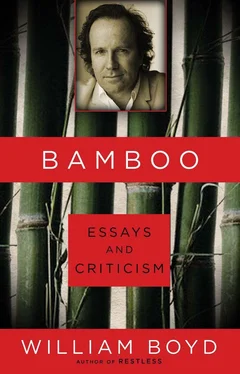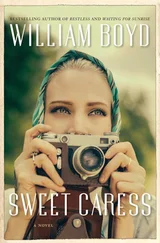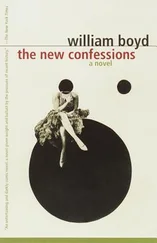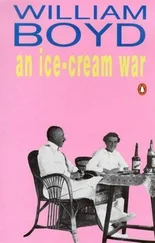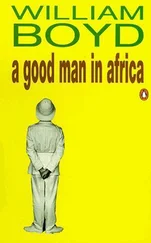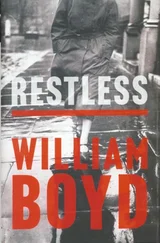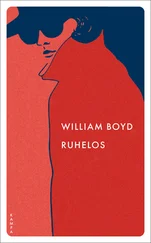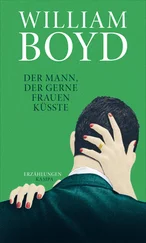If American Visions is the history of a love affair gone bad, it is also the history of a nation. Hughes, as well as being the doyen of art critics, is also a historian of the first rank (as The Fatal Shore , his history of the founding of his native Australia, and Barcelona testify). One of the extra pleasures of this richly pleasurable book is that on its completion one has read, almost by accident, a learned and succinct account of the last 300 years or so of America’s existence, taking in and placing in context all the familiar milestones, from discovery to colony to revolution, to republic, civil war, industrialization, depression and eventual world dominance. Hughes does this effortlessly, it seems (which means the vast scholarship and writerly skill are implicit), braiding his cultural exegesis with his historian’s, giving us the history not only of the development of the visual arts in America but also of its multiform, energetic, striving and troubled people.
As far as the art is concerned, it was a slowish beginning. Pueblo architecture and Amish quilts apart, the painting produced in pre-revolutionary America is naive and on the quaint side. Tardily, artists of merit evolve as the eighteenth century turns into the nineteenth: Copley, the brothers Peale (Rembrandt and Raphaelle — clearly their parents had ambitions for the boys); but the one dominant figure of this period is Thomas Jefferson, brimful of prodigious talents — statesman, writer, farmer, inventor, collector and architect of real note. Hughes’s mini-essay on Jefferson is a gem; the book is studded with such glinting nuggets, models of concision and insight.
The first artist of real status to emerge, and one who seems quintessentially American, is Frederick Church, the Caspar David Friedrich of American art, whose vast apocalyptic canvases drew huge crowds. But the interest we have in the painters of the nineteenth century (Eakins and Winslow Homer aside) is largely topographical (Thomas Cole, Audubon), or cultural-historical (Remington), rather than aesthetic. Hughes is wisely cautious about making grand assertions (one is always aware, behind one’s back as it were, of the muted roar of Europe’s contemporaneous artistic achievements). For example, he posits Whistler as America’s first great painter, but with the rider that it is “absurd to class him with Degas or Manet.”
Indeed one is always conscious, because of the historical context into which the art history is woven, of America’s other claims to fame as the twentieth century begins and advances — the industrial might, the innovations in architecture and consumerism, its increasing hegemony in the world — to such an extent that the accomplishments in the visual arts seem nugatory.
There are two exceptions. Hughes uses the word “genius” only once in the book and applies it to Frank Lloyd Wright. I think he could also have appended it to Edward Hopper. Hughes’s admiration for Hopper is of the highest, but it strikes me, inspired by Hughes’s long view of the twentieth century, that Hopper emerges as the indisputable great modern American artist: painterly diligent, visionary, unique (Europe has produced nothing like him). And as the artistic efforts of this century end in a wet fart of faddery, flim-flam and self-indulgence, one wonders if we shall ever see his like again.
The long view puts everything in perspective. Even the golden years of American painting — the 1950s and 1960s — when New York was the demonstrable capital of the art world, now require some careful reassessment. Here Hughes is at his most incisively authoritative. While authentic geniuses may be thin on the ground, twentieth-century American art produced its fair share of legends and icon-makers, notably Georgia O’Keeffe, Jackson Pollock and Andy Warhol. There were artists of real talent — Davis, de Kooning, Diebenkorn, Kelly, Johns and Rauschenberg perhaps — and talents that flickered brightly for a moment (Kline, Lichtenstein, Rivers and Guston), but now the fuss has died down true merit will out and a lot of it looks thin stuff.
Hughes’s thesis is subtle and persuasive and I apologize if my summary makes it seem all crude, broad strokes. Much of the blame for the decline in American art in the last half of the century is laid at the door of the art critic Clement Greenberg, champion of Abstract Expressionism and later of movements dubbed Post-Painterly Abstraction and Colour Field Abstraction. Greenberg’s disastrous “triumph,” Hughes avers, was to suppress the evidence of skill — pictorial skill in an artist’s repertoire being deemed a snare and a delusion. As a result of Greenberg’s baleful influence (unparalleled in any critic before or since), America evolved a system of art education “that has repealed its own standards,” that destroyed a whole tradition in a generation or two by not teaching its skills, “and that was what happened to figure painting in the United States between 1960 and 1980.” NO ONE CAN DRAW ANY MORE is the stark and frightening message. The art world is now reaping that whirlwind, and the stiff breeze is being felt on these shores also.
Hughes has plenty of positive things to say about contemporary American art, though it is clear that the current scene and its swarming Varps (Vaguely Art Related Persons) fill him with despair. He writes superbly, of course, and indignation often brings the best from his pen; for example, when he describes the art world of the eighties:
pumped by its own fetishism, by billionaires competing in the auction room like mountain goats clashing horns over possession of a crag or a mate.
What has made his criticism so trenchant over the last four decades is that it has always been based on sound and immovable principles: namely a firm belief that the bedrock of all serious art is technical prowess, a graphic literacy. Only that virtuosity coupled with “the long tussle with the real motif” justifies the experimentation and horizon-expanding efforts of modernist art. Without this we are left with “imps and goblins,” their whimsical games and silly, talentless daubings: “the sleep of reason” duly producing its monsters.
1997
Ingres said it takes thirty years to learn to draw and three days to learn to paint. That may be putting it a little strongly, but one can understand the fundamental thrust of his argument: it is to do with delineation, with establishing the primacy of the line in art. And if there is one area of artistic practice where this primacy holds incontrovertibly it is etching, once defined as “drawing at its most expressive.” In etching, the abstract and suggestive qualities of the line dominate and are given a further authority through the medium of printing. Graham Sutherland began his artistic life as an etcher, and it is in that fascinating and meticulous craft, it seems to me, that some of the clues to his artistic personality reside.
In etching there is a freedom denied the engraver, the freedom of the needle running easily over a grounded plate, whereas the engraved line — the burin cutting into the copper — has a necessary precision and discipline, a pondered finality. But every etching is an original drawing. The plate is prepared, the edge bevelled and the surface cleaned, the ground — beeswax and bitumen — is applied. The needle is poised. The implement held in your hand is closer to a nail or a knife than anything else. No pliant brush, no blurriness or shading of graphite or chalk, just a point. And the gesture it makes, its signature, however fluid, however graphic, is still a kind of cutting, a scratch, an incising. There are many variations of technique to be learned, many tricks of the trade to suggest distance and tone and differing effects of light, but etching is, in the end, purely a matter of expressive line.
Читать дальше
